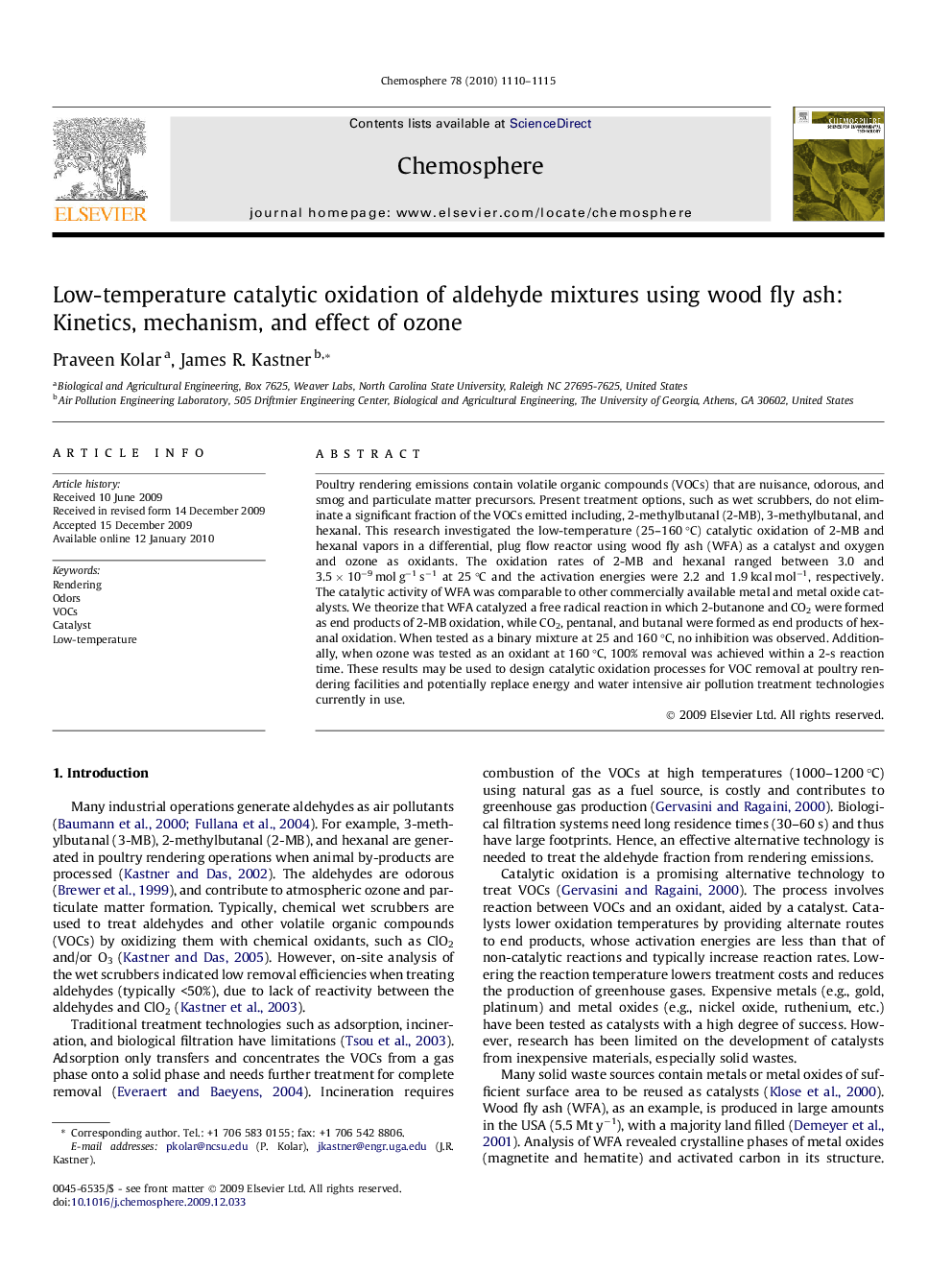| Article ID | Journal | Published Year | Pages | File Type |
|---|---|---|---|---|
| 4411843 | Chemosphere | 2010 | 6 Pages |
Poultry rendering emissions contain volatile organic compounds (VOCs) that are nuisance, odorous, and smog and particulate matter precursors. Present treatment options, such as wet scrubbers, do not eliminate a significant fraction of the VOCs emitted including, 2-methylbutanal (2-MB), 3-methylbutanal, and hexanal. This research investigated the low-temperature (25–160 °C) catalytic oxidation of 2-MB and hexanal vapors in a differential, plug flow reactor using wood fly ash (WFA) as a catalyst and oxygen and ozone as oxidants. The oxidation rates of 2-MB and hexanal ranged between 3.0 and 3.5 × 10−9 mol g−1 s−1 at 25 °C and the activation energies were 2.2 and 1.9 kcal mol−1, respectively. The catalytic activity of WFA was comparable to other commercially available metal and metal oxide catalysts. We theorize that WFA catalyzed a free radical reaction in which 2-butanone and CO2 were formed as end products of 2-MB oxidation, while CO2, pentanal, and butanal were formed as end products of hexanal oxidation. When tested as a binary mixture at 25 and 160 °C, no inhibition was observed. Additionally, when ozone was tested as an oxidant at 160 °C, 100% removal was achieved within a 2-s reaction time. These results may be used to design catalytic oxidation processes for VOC removal at poultry rendering facilities and potentially replace energy and water intensive air pollution treatment technologies currently in use.
